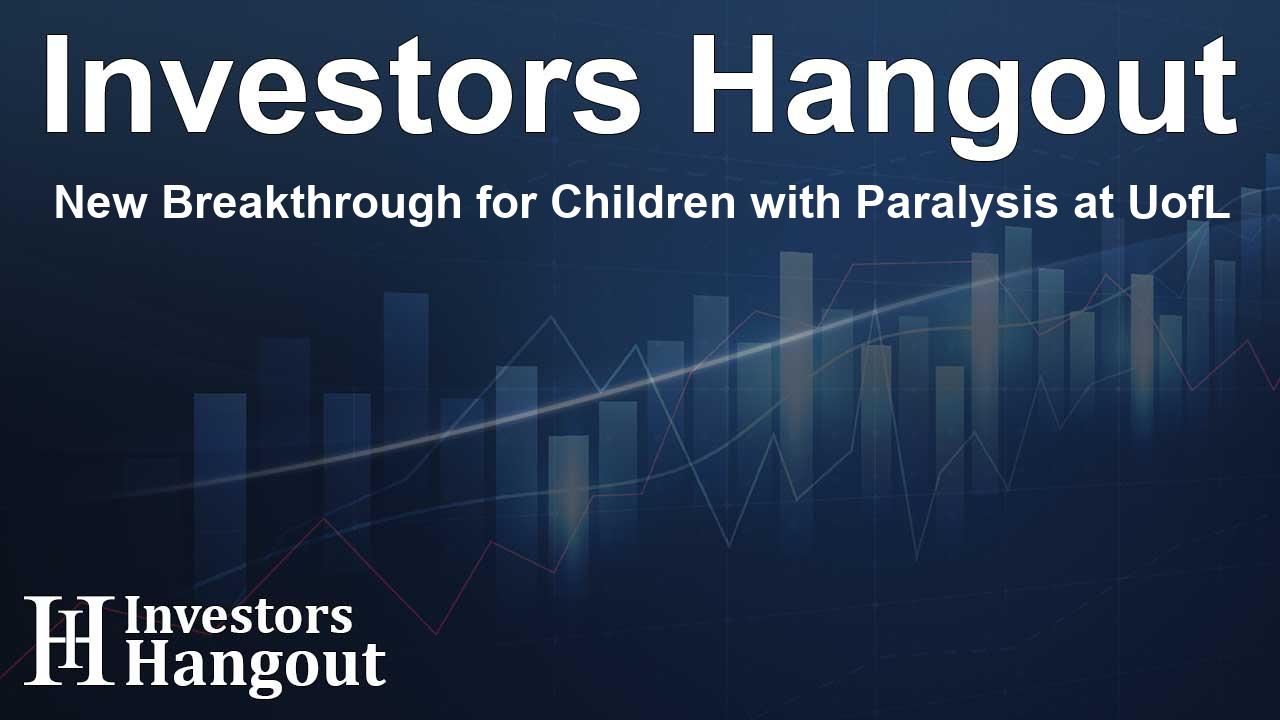New Breakthrough for Children with Paralysis at UofL

Innovative Techniques Revolutionize Treatment for Children with Paralysis
At the forefront of medical research, the University of Louisville has implemented pioneering techniques that benefit children with complete paralysis caused by spinal cord injuries. This groundbreaking method uses external electrical stimulation to empower young patients, allowing them to take steps and significantly improve their quality of life.
Experience Transformative Gains Through Action-Based Therapy
Children, aged 7 to 12, were involved in a clinical study at UofL's Kosair for Kids Center for Pediatric NeuroRecovery. Throughout the research, the children received external electrical stimulation directed over the spinal cord, combined with engaging activity-based therapy. Even as sessions progressed, these children achieved unexpected enhancements in various functions, including stepping, sensation, and even bladder control.
The Mechanisms of External Electrical Stimulation
Professor Andrea Behrman, who directed the study, explained, "We found electrical stimulation can effectively activate the spinal cord, allowing a paralyzed individual to step intentionally." The therapy gives hope to children who have lived with paralysis for extended periods, as the stimulation engages a part of the nervous system once thought dormant.
Trial Conditions and Procedures
During the study, participants experienced a blend of 60 sessions involving non-invasive, external electrical stimulation administered through specialized pads placed on their skin. This approach targeted the sensory nerves of the spinal cord. Alongside electrical stimulation, trained therapists facilitated movements during these sessions. They encouraged children to physically engage in stepping motions and consciously attempt to take their steps.
Long-Lasting Benefits Beyond the Study
Post-study evaluations indicated children could continue to step on their own—both with and without external stimulation—long after their therapy concluded. The lasting impact of the therapy supports the notion that spinal cords may possess an innate ability to recover functionalities with appropriate stimuli.
Impact on Families and Quality of Life
Parents of participating children have noted profound changes resulting from the therapy sessions. Kalyn MacIntyre shared her son Malcolm's experience, indicating he retains the ability to step and feels bodily responses, such as the urge to use the restroom, which he struggled with before participating in the trial.
Fostering Motivation: The Key to Success
One challenge in the research environment is keeping children motivated. As Professor Behrman remarks, connecting with each child personally is necessary. Incorporating elements of fun, such as games and personalized goals, has proven effective in sustaining enthusiasm throughout the demanding sessions.
Creative Engagement Strategies
For instance, basketball-themed interactions helped one participant feel excited and invigorated during his sessions. The therapists have developed tailored tactics to motivate the children, resulting in better engagement and success in taking steps. In one example, the staff even set ambitious point goals to challenge Malcolm, boosting his excitement and commitment.
Looking Forward: The Future of Pediatric NeuroRecovery
The recent breakthroughs at UofL are not just isolated successes; they mirror the progress made with adult spinal injury patients. Prior studies using surgically implanted stimulators have yielded positive results, and this new research reinforces the idea that positive outcomes can be achieved without surgical intervention while allowing for an enhanced ability to move independently.
This promising research lays the groundwork for future studies and therapeutic methods, suggesting that the potential for functional recovery in children with spinal cord injuries is greater than previously anticipated.
Frequently Asked Questions
What is the main focus of the research at UofL?
The research focuses on helping children with complete paralysis gain the ability to take steps through innovative electrical stimulation techniques combined with therapy.
How does the electrical stimulation technique work?
The technique involves applying non-invasive electrical stimulation to the spinal cord while the child engages in physical therapy, activating nerve pathways that assist in movement.
What age group participated in the study?
The study involved children aged between 7 and 12 years old who are experiencing complete paralysis.
What notable improvements have been reported from the study?
Participants have experienced improvements in stepping abilities, sensation, bladder function, and overall physical independence.
What strategies did researchers use to motivate the children during therapy?
Researchers customized engagement by incorporating children's interests and creating fun challenges during sessions, making the therapy enjoyable and rewarding.
About The Author
Contact Olivia Taylor privately here. Or send an email with ATTN: Olivia Taylor as the subject to contact@investorshangout.com.
About Investors Hangout
Investors Hangout is a leading online stock forum for financial discussion and learning, offering a wide range of free tools and resources. It draws in traders of all levels, who exchange market knowledge, investigate trading tactics, and keep an eye on industry developments in real time. Featuring financial articles, stock message boards, quotes, charts, company profiles, and live news updates. Through cooperative learning and a wealth of informational resources, it helps users from novices creating their first portfolios to experts honing their techniques. Join Investors Hangout today: https://investorshangout.com/
The content of this article is based on factual, publicly available information and does not represent legal, financial, or investment advice. Investors Hangout does not offer financial advice, and the author is not a licensed financial advisor. Consult a qualified advisor before making any financial or investment decisions based on this article. This article should not be considered advice to purchase, sell, or hold any securities or other investments. If any of the material provided here is inaccurate, please contact us for corrections.
